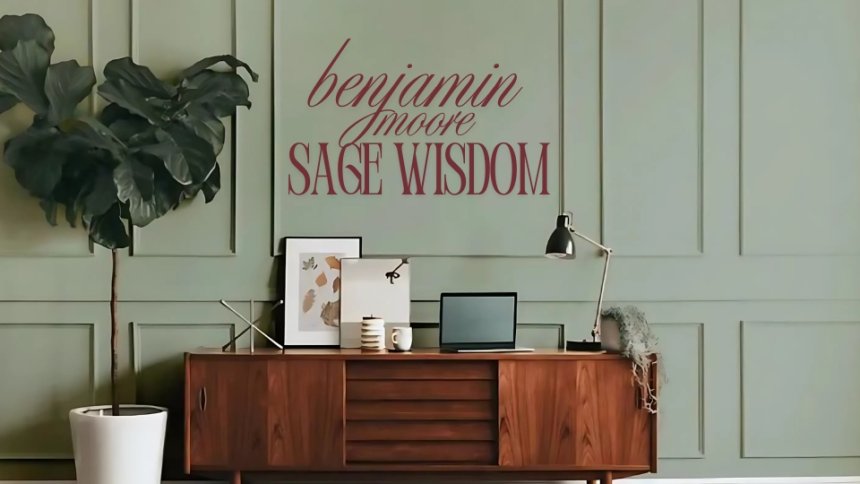Hey there! I know the struggle of finding the perfect green paint – it’s like trying to pick your favorite ice cream flavor when there are a million choices.
But I’m excited to tell you about Benjamin Moore’s Sage Wisdom, a gorgeous gray-green that might just end your color search. It’s that perfect middle ground that somehow looks amazing in every room (like magic, right?).
Want to see if this could be your dream color?
Let’s chat about how to use this beauty in your home and why it might be exactly what you’ve been looking for!
Understanding Sage Wisdom
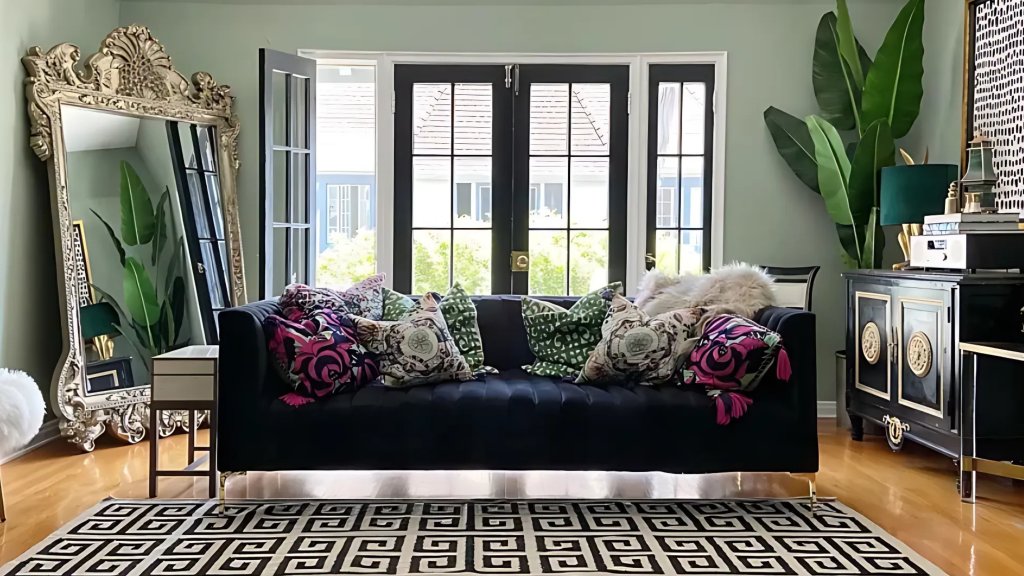
Color Characteristics
I find Sage Wisdom fascinating because it sits right in the middle of the color spectrum – not too light, not too dark. Its LRV of 43.98 means it reflects just enough light to keep spaces feeling open while maintaining its color presence.
Looking at the technical side, this paint mixes Red (170), Green (182), and Blue (166) to create a balanced green that doesn’t lean too far in any direction.
What makes it special is the subtle gray undertones that keep it from reading too bright or pastel.
Visual Impact
In my experience testing this color, I found its most notable quality to be how it changes throughout the day. In bright natural light, it shows off its green side more clearly.
The gray undertones become more noticeable when the light dims, creating a soft, muted look.
The color reads neutral and cool, making it a fitting choice for modern homes. I’ve noticed it’s particularly well-suited for spaces where you want to create a sense of calm without going completely neutral.
It adds character to a room while staying subtle enough to serve as a long-term choice.
Room by Room Application
1. Living Spaces
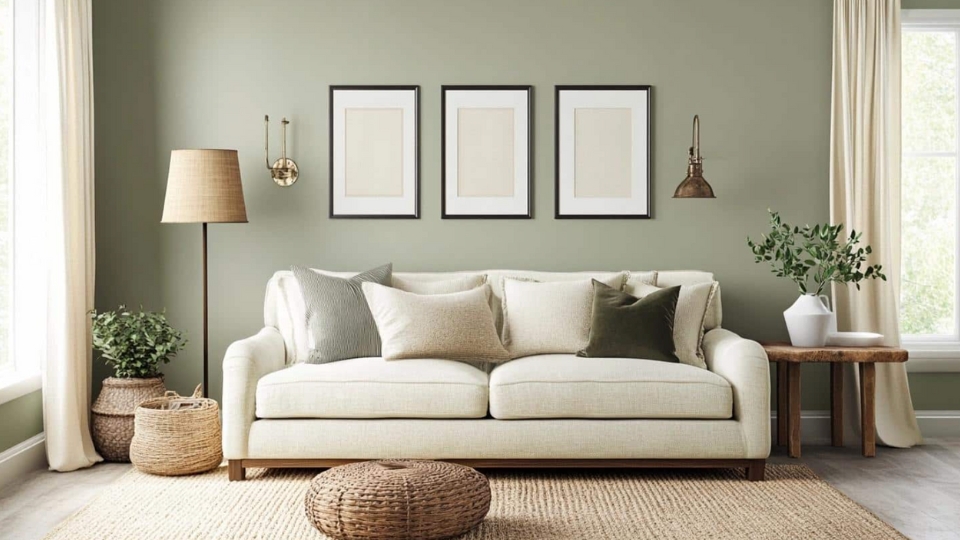
Looking at real homes, I’ve seen Sage Wisdom create an incredibly welcoming feel in living rooms. It brings a fresh yet grounded feeling to gathering spaces when paired with natural wood tones and white trim.
I love using it in living areas because it makes the room feel put together without trying too hard.
2. Private Retreats
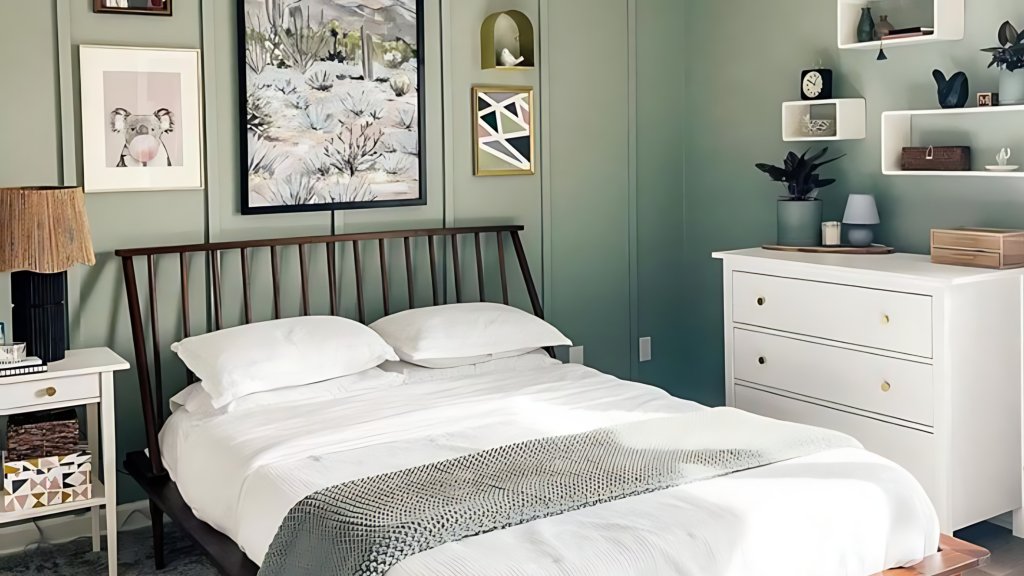
In bedrooms, Sage Wisdom shows its versatility. I suggest using it as an accent wall behind the bed – that’s where it works best.
I find it’s most successful for bathrooms on vanities rather than all walls, as it can feel a bit heavy in smaller spaces with limited light.
Impact of Lighting
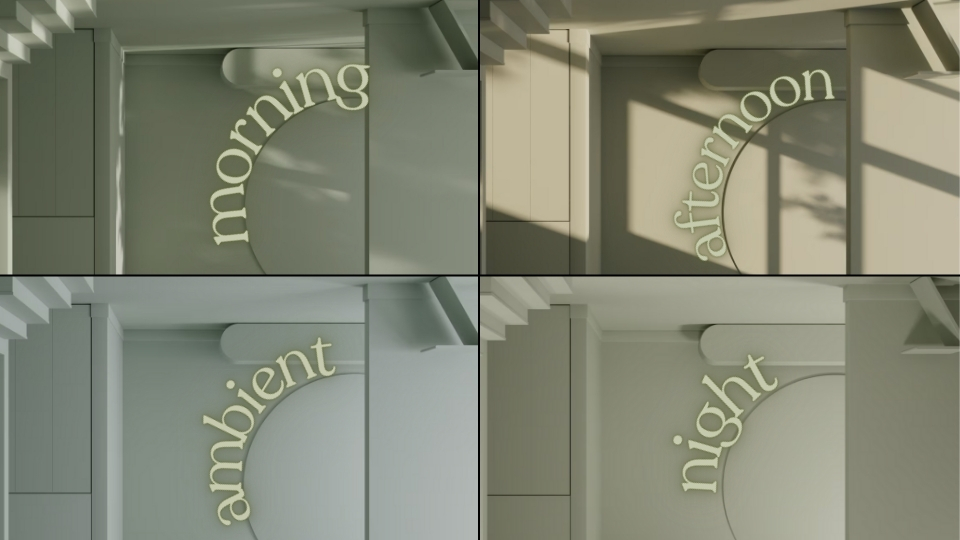
Natural Light Performance
Here’s what I’ve learned about how this color behaves in different lights:
- North-facing rooms: Takes on a cooler, more subtle gray-green tone
- South-facing rooms: Shows off its warmer undertones
- Morning light: Reads softer and more muted
- Afternoon sun: Displays its true sage character
Keeping It Consistent
For the most balanced look, I recommend testing the color in your space at different times of day. If you’re using it in multiple rooms, pay special attention to connecting spaces – the color can read differently based on how light travels through your home.
Complementary Color Schemes
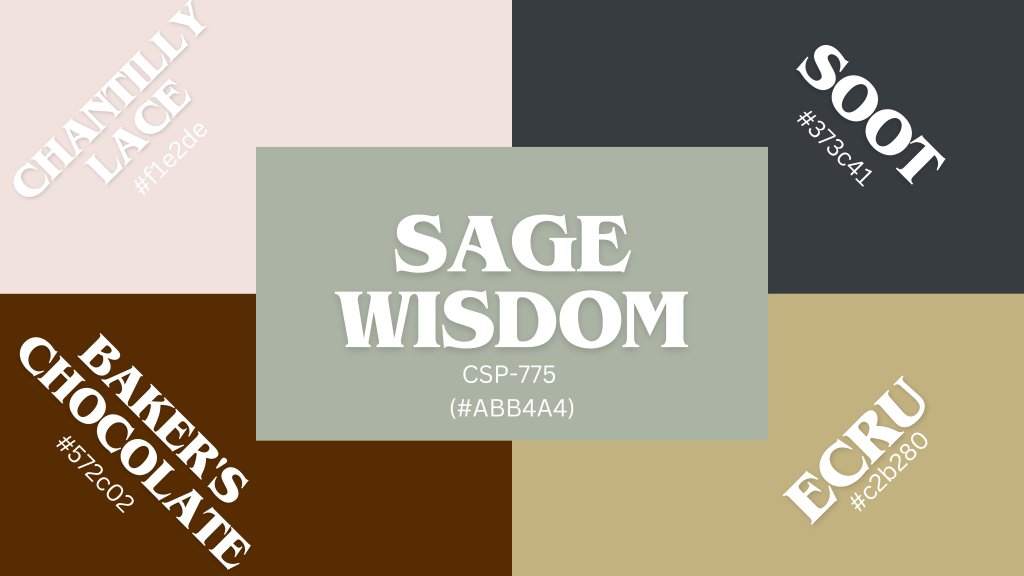
Looking at Sage Wisdom’s natural balance, I’ve found some color combinations that truly bring out its best qualities:
Main Color Partners
- White trim options: I particularly recommend Benjamin Moore’s Chantilly Lace for a clean look, or Paper White for a softer touch
- Deep blue-charcoal: Benjamin Moore Soot creates a stunning contrast without feeling harsh
- Neutral companions: Sherwin Williams Jogging Path offers a sandy neutral that pairs beautifully
Adding Contrast
For Those Who Want to Make Bolder Statements:
- Mid-Toned Purples Work Nicely – Sherwin Williams Perle Noir Adds Depth without Overwhelming
- Natural Wood Tones Help Ground the Space
- Whites with Less Yellow Undertones Keep the Look Fresh
Creating Color Palettes with Sage Wisdom
Everyday Living Palette
- Main walls: Sage Wisdom
- Trim: Chantilly Lace
- Accent: Solstice
- Secondary accent: White Dove
Modern Retreat Palette
- Primary: Sage Wisdom
- Secondary: Smoky Blue
- Neutrals: Baby Breath
- Warm accent: Cavern Clay
Styling with Sage Wisdom
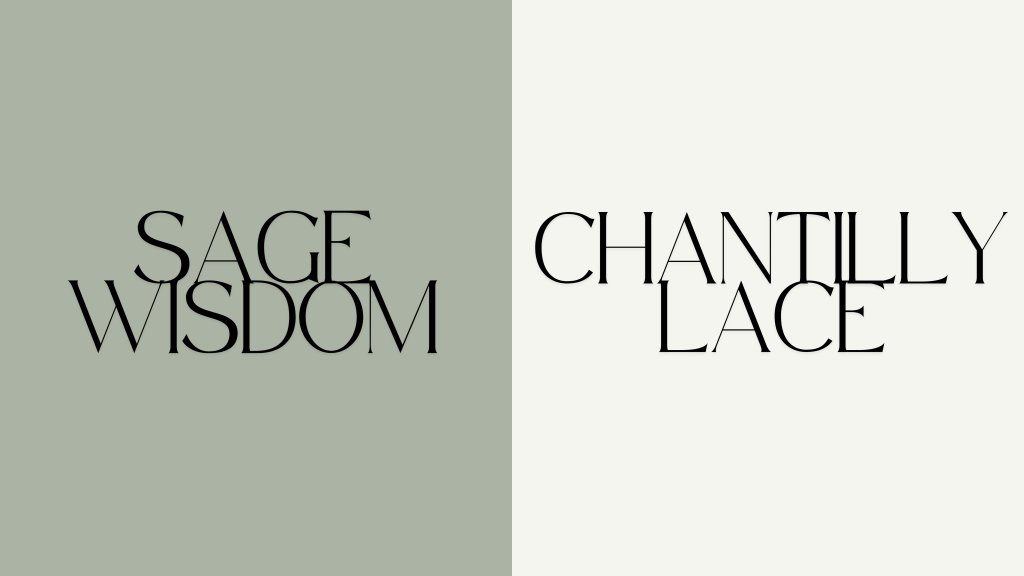
I used Sage Wisdom in my living room last year, transforming the space into a serene retreat. Whether you lean modern, rustic, or traditional, this color bends to your style—here’s how to make it work for you.
Aligning with Design Styles
- Modern: I paired mine with a black leather sofa and matte white shelves. A brass floor lamp added just enough warmth.
- Rustic: Sage Wisdom shines in my friend’s cabin with reclaimed wood shelves and a chunky knit throw. Leather chairs or a woven jute rug tie it all together.
- Traditional: Try it with deep green velvet pillows and a vintage rug—it feels timeless but fresh.
Worried Sage Wisdom might feel chilly? I felt the same until I added a cream linen sofa and a fuzzy ivory rug. Suddenly, the room felt cozy, not cold.
Incorporating Elements
- Walls: Start with one accent wall if you’re hesitant. My kitchen nook in Sage Wisdom feels like a quiet escape.
- Lighting: Swap bright bulbs for soft, warm ones. My rattan pendant light instantly makes evenings cozy.
Decor & Accessories
- Furniture: Neutral tones like taupe or soft gray let the walls take center stage. My charcoal velvet armchair is a favorite.
- Fabrics: Linen curtains in oatmeal or slate blue keep the vibe relaxed.
- Accents: Add a large abstract painting with muted greens or a terracotta planter for earthy texture.
What’s the first thing you’ll try with Sage Wisdom? For me, it was a fiddle-leaf fig plant—it brought the color to life.
Practical Application Tips
I learned that prepping walls matters way more than I thought. Last summer, I rushed into painting my bedroom with Sage Wisdom and ended up with uneven streaks because I skipped sanding. Don’t be like me!
Surface Preparation
- Clean walls with a damp cloth to remove dust (yes, even if they look clean).
- Fill holes with spackle—wait for it to dry, then sand smooth. I use a sanding sponge for corners.
- Prime if your walls are stained or you’re covering a dark color. Wait, do I really need primer? For Sage Wisdom’s soft tone, I’d say yes—it helps the color stay true, especially over red or navy walls.
Application Techniques
Cut in edges with an angled brush first—it’s tedious but saves touch-ups later. When rolling, work in small sections and keep a wet edge to avoid lap marks.
I used a cheap roller once and left fuzzies everywhere; now, I swear by microfiber rollers.
Tools & Pro Tips
- Tools: A 2-inch angled brush, roller extension pole, and a sturdy tray. Pro tip: Pour paint into a bucket with a grid—it’s easier to load evenly.
- Drying time: Sage Wisdom dries lighter at first. Panic? Wait a full 24 hours—the true color settles beautifully.
What’s your biggest painting hurdle? Mine was learning patience… but hey, coffee breaks help.
Maintenance and Sustainability
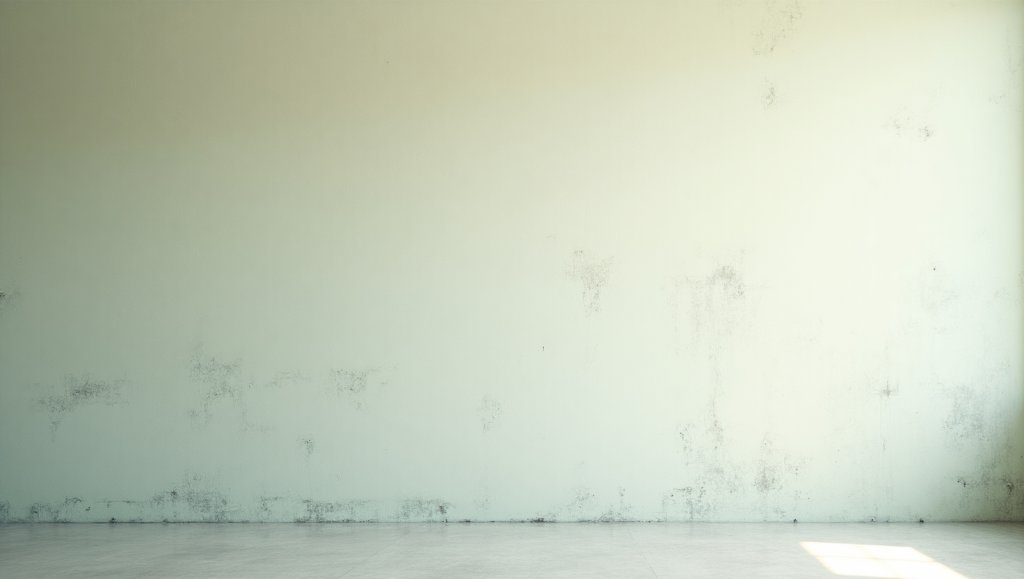
I’ve had Sage Wisdom on my living room walls for two years now, and it still looks fresh—but only because I learned a few tricks. Let’s keep your paint looking great and do right by the planet.
Care and Maintenance
A damp microfiber cloth works wonders for everyday smudges (hello, toddler fingerprints). Avoid harsh cleaners—they can dull the finish. Once, I tried a magic eraser on a scuff… and repainted the whole corner. Ugh.
How do you handle deeper stains? A mix of mild dish soap and water usually does it. For stubborn spots, dab gently—don’t scrub!
Touch-ups are easier if you save leftover paint. I keep a small jar labeled with the color code. Pro tip: Feather the edges with a dry brush to blend the patch seamlessly.
Sustainability Aspects
I chose Benjamin Moore partly for their eco-commitments. Their paints are low-VOC, which meant no headache-inducing fumes while I painted my nursery. Plus, their recycling program for old paint cans helped me clear clutter guilt-free.
But does eco-friendly paint last? In my experience, yes. My kitchen, painted with Sage Wisdom three years ago, still resists moisture and fading better than cheaper brands I’ve tried.
What’s your trick for keeping walls pristine? Mine? A “no snacks near the paint” rule—learned after a salsa incident.
Conclusion
I’ve painted three rooms with Sage Wisdom now, and every time, I’m shocked at how it changes the vibe—calm but never boring. It’s like a neutral that feels intentional, whether you’re going cozy or crisp.
Are you worried it’s too subtle to make a difference? I thought so, too until I redid my home office. Paired with white trim and a navy rug, it went from “meh” to my favorite spot in the house.
If you’re on the fence, grab a sample pot. Seeing it in your light (morning vs. evening!) makes all the difference. And if you’re like me, you’ll paint that “test spot” wall-to-wall.
Ready to try it? Swing by a Benjamin Moore store—their color experts helped me nail the finish (eggshell for durability, matte for hiding flaws). Trust me, your walls deserve this glow-up.
What color will you pair with Sage Wisdom first? I’m eyeing terracotta accents next.

